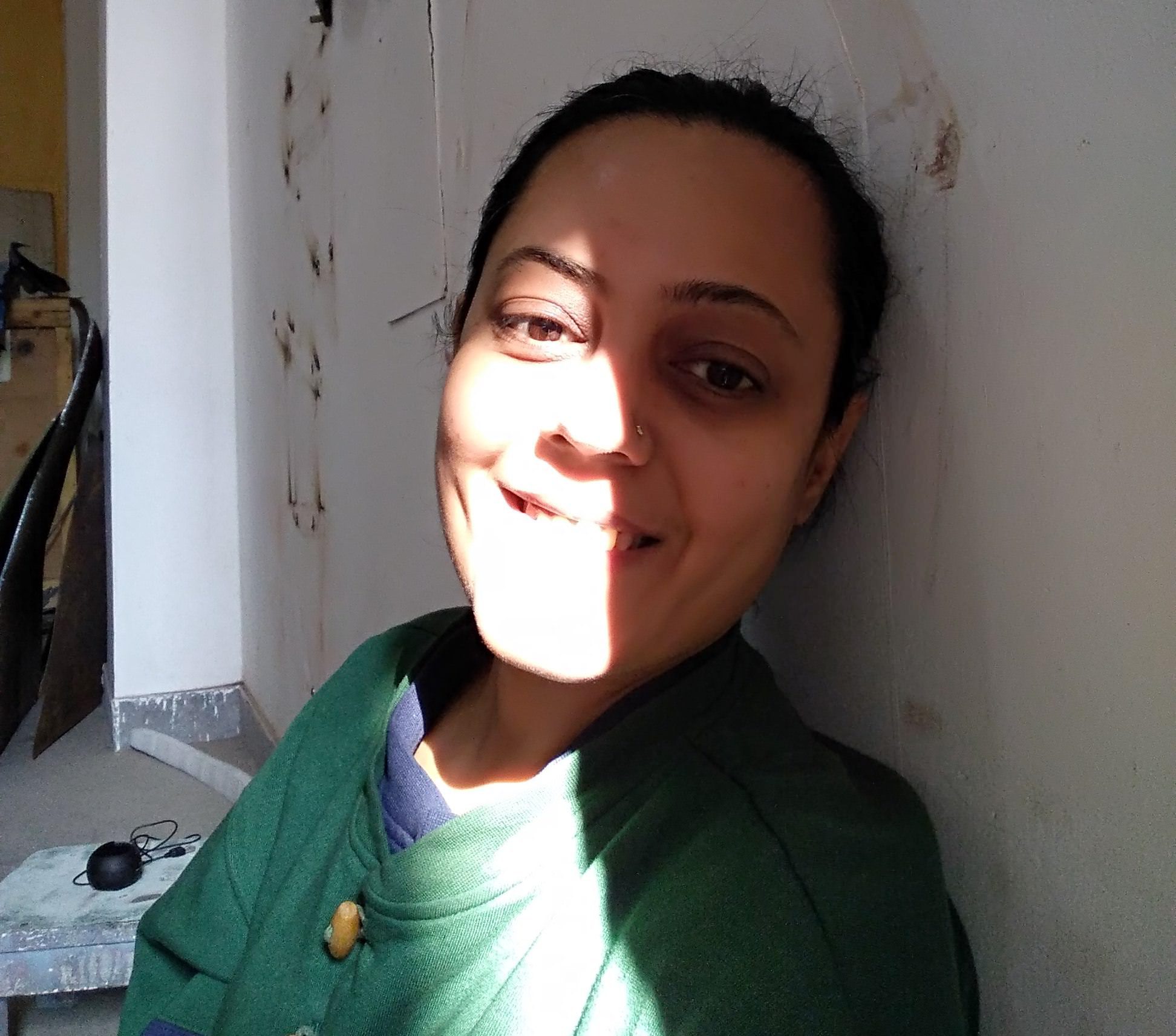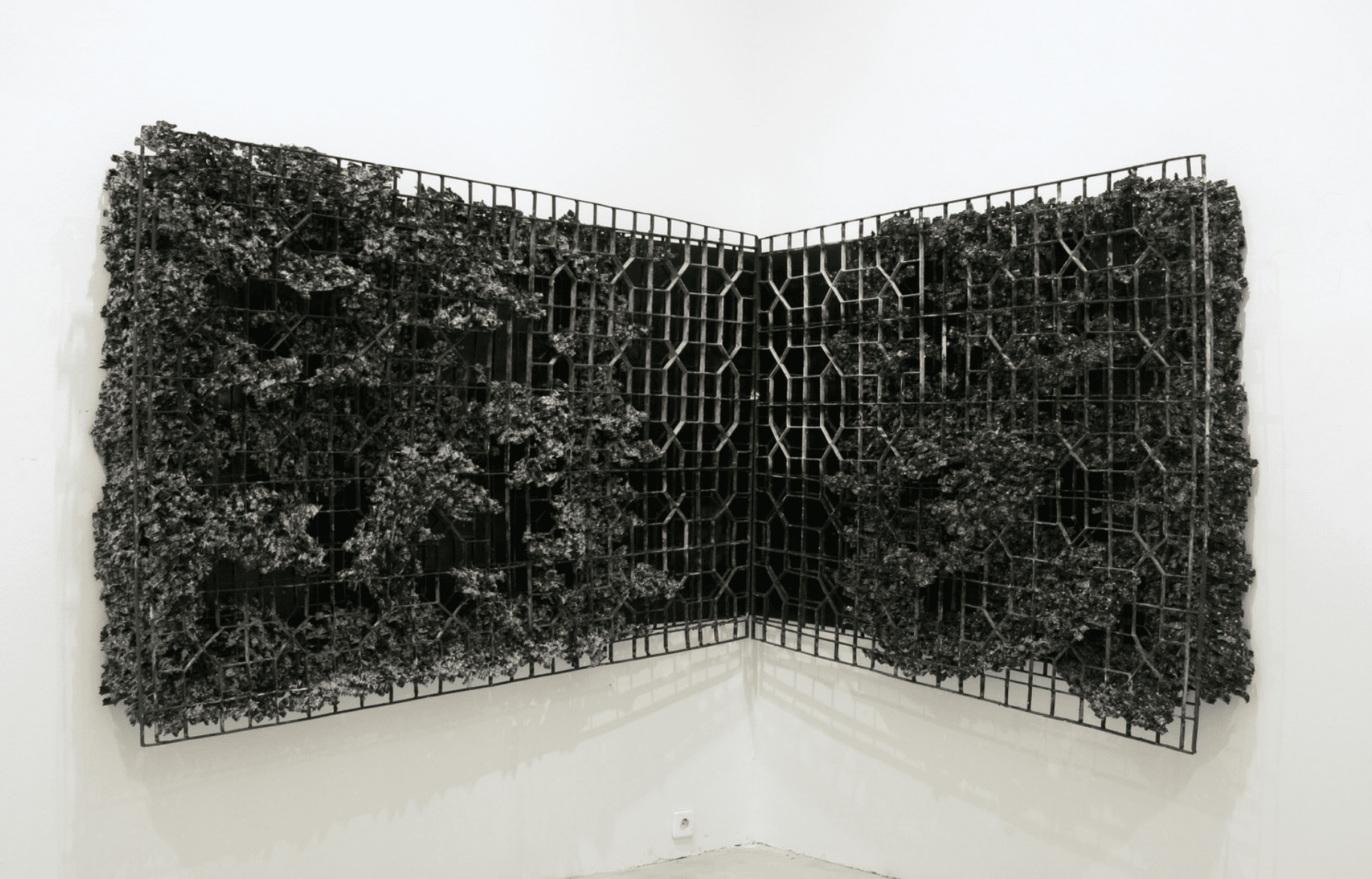
Be sure to check out our upcoming art exhibition on Tuesday, October 15 with our two newest Visiting Artist Fellows, Sakshi Gupta and Sagar Chhetri, and observe their artwork that provides creative commentary on identity in contemporary South Asia. Before the event, learn more about Gupta’s background and the meaning behind her artwork below.
Can you tell us a little about yourself and what inspired you to pursue sculpture and mixed media in your career?
I was born and brought up in New Delhi and moved to Mumbai recently. I was always interested in doing something creative, but initially didn’t know how to pursue it. I got into sculpture completely by default. It was much later, after completing my college studies and when I got a chance to explore the medium with a fresh perspective in artist residencies within India, that I was drawn into it quite deeply.
How has your journey in the visual arts been so far?
The journey so far has been really fulfilling and rewarding at many levels. At the same time, every step forward has shown me there is much to explore. The challenge is always in the production of the work, but that becomes quite a learning experience as it leads to a better understanding of my medium and opens avenues for new explorations.
Sometimes, you may have a certain idea in your mind and it develops as you progress in your work. The people who I work with bring their own skillsets into the work situation, and it can become more of a team activity.
What are you trying to convey in your series At the Still Point of the Turning World?
In the sea of constant movement and change that we live in, At the Still Point of the Turning World explores the potentiality of a space of permanence and stillness, a space that could exist on its own. Understanding the momentariness of life, time and eternity; the density of the present and the power of imagination; stepping down from an illusory perch in despair and disgust, only to try to climb again; observing the center from the periphery and vice versa. This inquiry brings in precious moments of clarity that become like fuel for one’s journey, these moments can be compared to a shudder in and out of focus.

What are the influences behind your work, and what is the significance of the mediums you use?
My practice is an attempt to frame human conditions of understanding, progressing, suffering, and halting due to the lack or gain of knowledge, will, or energy. My works often wrestle with the need to achieve a balance between life’s inherent polarities, like the inner life of reflection and the outer life of movement and action.
Using materials considered waste or ordinary to make something of significance has, over time, become central to my practice. Exploring notions of transformation in this way is also my way of understanding the process of time, as one faces the stillness between an accumulation of the past and a push toward the future. I see my practice as an immersive journey through form and material, toward the non-material and experiential.
What do you hope to study or learn during your time as a Visiting Artist Fellow at the Mittal Institute?
I wish to look at how materials become willful actors and agents within artistic processes, entangling their audience in a web of connections. I’d like to investigate the role of materiality in art, expanding upon notions of time, space, value, and process. Materials can often inform us not only about spaces and places from a social and economic point of view, but can also give deep insight into certain time periods.
I would like to study materialist critiques of artistic production where I survey certain artistic practices from now and the recent past, drawing a parallel with practices from the ancient past in South Asia.
